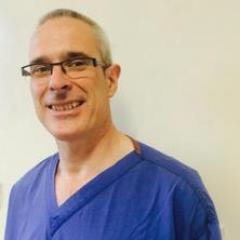Multiple projects in genomics, surgery and subspecialities and anaesthesiology
Project 1: Extracellular Vesicles in Traumatic Haemorrhagic Shock
Location: School of Biomedical Sciences (St Lucia)
Type of student:
- Both HDR and Extra-curricular
- Honours students
Type of work:
- Wet lab work
Brief synopsis:
PROJECT BACKGROUND
Traumatic injury is the leading cause of death in patients younger than 40 years of age, with haemorrhagic shock contributing significantly to mortality and morbidity. Following injury patients are faced with multifactorial pathophysiology contributed to by hypoperfusion, endothelial damage and coagulopathy. These derangements are associated with progression to multiple organ dysfunction syndrome (MODS) and increased mortality.1
Coagulopathy observed in trauma patients, termed acute traumatic coagulopathy (ATC), is currently of high research interest. The cellular mechanisms underlying the development of ATC are yet to be clearly elucidated, however current work implicates platelet dysfunction, endothelial damage and aberrant activation of inflammation.2 In the context of injury, extrusion of extracellular vesicles (EVs) from all three of these subpopulations (endothelium, platelets and immune cells) have been demonstrated.3,4 EVs are membrane bound particles which may derive surface markers or contents from their cell of origin. Expression of surface markers with coagulation function mean that EVs exist at the interface of cellular and plasma coagulation pathways and may therefore play a role in the development of ATC.
Existing studies have demonstrated an increase in circulating EVs hours after injury and provided early evidence in vitro coagulation function.4 An important research gap exists with respect to the temporal profiles of EV concentrations in the hyperacute post injury phase. Early EV dynamics are an important avenue to investigate given that the induction of ATC also occurs immediately post injury.
The proposed honours project will contribute to an ongoing larger project wherein we have developed a porcine (pig) model of traumatic injury, haemorrhagic shock and resuscitation. This model is currently being used to investigate the responses of the microcirculation, endothelium and coagulation to traumatic haemorrhagic shock and resuscitation. This, well established, model is easily amenable to incorporate investigation of early EV dynamics. The data generated from this project would be of academic interest in its own right, and in combination with more extensive characterisation of post injury pathophysiology in the model animal.
PROJECT DETAILS
Key Aims
- Optimise protocol for EV extraction from plasma samples collected at various timepoints following injury and resuscitation in a porcine trauma model
- Quantify concentrations of EV at various timepoints following injury to characterise the hyperacute temporal profile of circulating EVs following injury
- Design and run a flow cytometry protocol to identify the origins of circulating EVs and stratify EV profiles by cellular origins
Experience and Skills Acquired
- Exposure to multidisciplinary research and clinical collaborators (the porcine model and experiments are run by the Traumatic Injury Sciences Group which is a collaboration between the School of Biomedical Sciences and School of Veterinary Sciences)
- Exposure to clinical procedures, protocols and monitoring
- Basic and advanced laboratory skills
Progress
- Model developed iteratively through a series of 10 model development experiments conducted in 2021 (MM, WG, RL)
- Equipment for extraction of EVs from porcine plasma acquired (IZON qEV columns https://www.izon.com/qev/overview)
- Application to animal ethics for experimental protocol submitted (pending review late 2021)
- The proposed honours project would commence with the model already developed and with preapproved ethics. This ensures sufficient time for generation of high quality data and thesis preparation within the 1 year timeline.
Project Personnel (Traumatic Injury Sciences Group)
- Professor Mark Midwinter (Group Leader, Principal Investigator)
> Raushan Lala (Doctor of Medicine (MD)/Doctor of Philosophy (PhD) candidate)
> Honours student – trauma (commencing 2022)
> Honours student – frailty (commencing 2022) - Dr Wendy Goodwin (Veterinary Anaesthetist)
> Dr Shaun Pratt (Doctor of Veterinary Clinical Science (DVetClinSci) candidate)
REFERENCES
- Hutchings SD, Naumann DN, Hopkins P, et al. Microcirculatory Impairment Is Associated With Multiple Organ Dysfunction Following Traumatic Hemorrhagic Shock: The MICROSHOCK Study. Crit Care Med. 2018;46(9):e889-e896.
- Moore EE, Moore HB, Kornblith LZ, et al. Trauma-induced coagulopathy. Nat Rev Dis Primers. 2021;7(1):30.
- Fröhlich M, Schäfer N, Caspers M, et al. Temporal phenotyping of circulating microparticles after trauma: a prospective cohort study. Scand J Trauma Resusc Emerg Med. 2018;26(1):33.
- Caspers M, Schäfer N, Fröhlich M, et al. Microparticles profiling in trauma patients: high level of microparticles induce activation of platelets in vitro. Eur J Trauma Emerg Surg. 2020;46(1):43-51.
Project 2: Multiple projects in Frailty
Fields:
- Geriatrics
- Genomics
Location: School of Biomedical Sciences (St Lucia)
Type of student: Higher Degree Research only i.e. PhD or MPhil (intercalated MD-PhD & MD-MPhil)
Type of work:
- Clinical work
- Wet lab work
Brief synopsis: This work is looking at biomediators of frailty and the individual trajectories. Specifically, this project will look at circulating cell free DNA the sub-types and tissues of origin.
Projetc 3: Simulation of tissue mechanical properties for simulation
Fields:
- Anaesthesiology
- Surgery and subspecialties
Location: School of Biomedical Sciences (St Lucia)
Type of student:
- Higher Degree Research only i.e. PhD or MPhil (intercalated MD-PhD & MD-MPhil)
- Honours students
Type of work:
- Clinical work
- Wet lab work
Brief synopsis:
Simulations of invasive procedures are becoming more important in training in many clinical specialties. It is important for such simulations to have content and construct validity. As part of this, particularly in minimally invasive procedure, it is important that the mechanical properties of the tissues are replicated in any simulation (physical or virtual).
This project will test some index procedures and measure tissue properties. The procedures will include epidural insertion, central line insertion, throacostomy, regional nerve blocks and cricothyroidotomy. Preliminary work will be on cadaveric material measuring shore hardness, and designing devices to measure similar properties in patients having these procedure.

